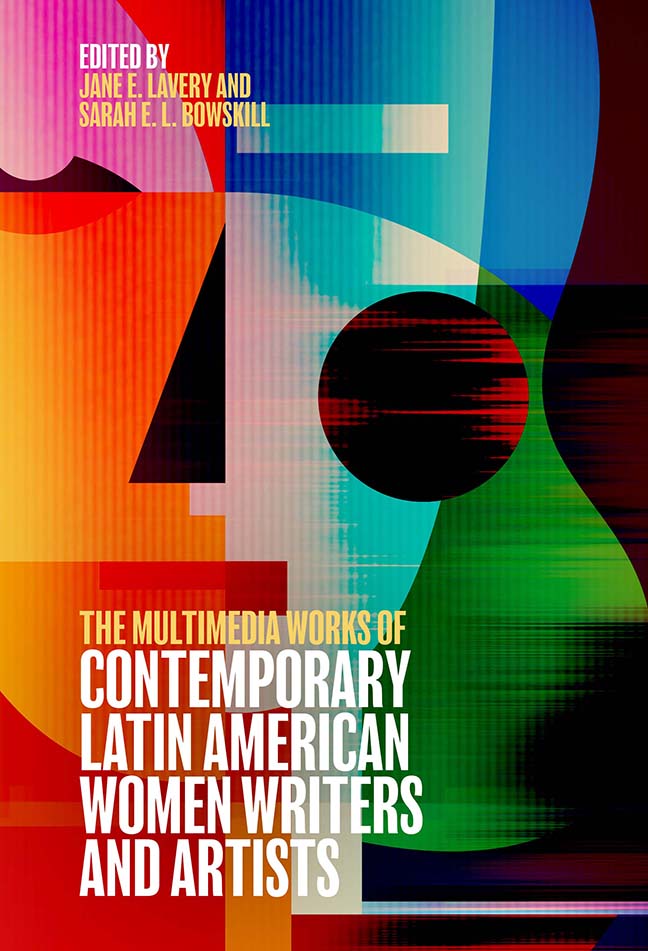Book contents
- Frontmatter
- Contents
- List of Illustrations
- List of Contributors
- Acknowledgments
- Introduction: A Crosscurrent of Contemporary Latin American Women Multimedia Writers and Artists
- 1 The Transliterary: The Novel and Other Multimedia Horizons Beyond (and Close to) the Textual
- 2 Commentary on Fe/males: Sieges of the Post Human (Transmedia Installation)
- 3 An Anthropophagic Ch’ixi Poetics
- 4 My Relationship with Artistic Creation Began with Words
- 5 Imagetext
- 6 Voices/Bodies
- 7 Redefining Meaning: The Interweaving of the Visual and Poetic
- 8 The Territory Is Home
- 9 Reflections on a Multimedia Practice
- 10 Digital Weaving
- 11 Eli Neira, Regina José Galindo, and Ana Clavel: “Polluting” Corporealities and Intermedial/Transliterary Crossings
- 12 The Digital Condition: Subjectivity and Aesthetics in “Fe/males” by Eugenia Prado Bassi
- 13 The Transmedia, Post-Medium, Postnational, and Nomadic Projects of Pilar Acevedo, Rocío Cerón, and Mónica Nepote
- 14 The Art of the Hack: Poets Carla Faesler and Mónica Nepote and Booktuber Fátima Orozco
- 15 The Places of Pain: Intermedial Mode and Meaning in Via Corporis by Pura López Colomé and Geografía del dolor by Mónica González
- 16 Words, Memory, and Space in Intermedial Works by Gabriela Golder and Mariela Yeregui
- 17 Fungibility and the Intermedial Poem: Ana María Uribe, Belén Gache, and Karen Villeda
- 18 Hypertext and Biculturality in Two Autobiographical Hypermedia Works by Latina Artists Lucia Grossberger Morales and Jacalyn Lopez Garcia
- 19 Dialogues Across Media: The Creation of (New?) Hybrid Genres by Belén Gache and Marina Zerbarini
- Bibliography
- Index
- Tamesis
8 - The Territory Is Home
Published online by Cambridge University Press: 17 December 2023
- Frontmatter
- Contents
- List of Illustrations
- List of Contributors
- Acknowledgments
- Introduction: A Crosscurrent of Contemporary Latin American Women Multimedia Writers and Artists
- 1 The Transliterary: The Novel and Other Multimedia Horizons Beyond (and Close to) the Textual
- 2 Commentary on Fe/males: Sieges of the Post Human (Transmedia Installation)
- 3 An Anthropophagic Ch’ixi Poetics
- 4 My Relationship with Artistic Creation Began with Words
- 5 Imagetext
- 6 Voices/Bodies
- 7 Redefining Meaning: The Interweaving of the Visual and Poetic
- 8 The Territory Is Home
- 9 Reflections on a Multimedia Practice
- 10 Digital Weaving
- 11 Eli Neira, Regina José Galindo, and Ana Clavel: “Polluting” Corporealities and Intermedial/Transliterary Crossings
- 12 The Digital Condition: Subjectivity and Aesthetics in “Fe/males” by Eugenia Prado Bassi
- 13 The Transmedia, Post-Medium, Postnational, and Nomadic Projects of Pilar Acevedo, Rocío Cerón, and Mónica Nepote
- 14 The Art of the Hack: Poets Carla Faesler and Mónica Nepote and Booktuber Fátima Orozco
- 15 The Places of Pain: Intermedial Mode and Meaning in Via Corporis by Pura López Colomé and Geografía del dolor by Mónica González
- 16 Words, Memory, and Space in Intermedial Works by Gabriela Golder and Mariela Yeregui
- 17 Fungibility and the Intermedial Poem: Ana María Uribe, Belén Gache, and Karen Villeda
- 18 Hypertext and Biculturality in Two Autobiographical Hypermedia Works by Latina Artists Lucia Grossberger Morales and Jacalyn Lopez Garcia
- 19 Dialogues Across Media: The Creation of (New?) Hybrid Genres by Belén Gache and Marina Zerbarini
- Bibliography
- Index
- Tamesis
Summary
In 2014, we began to work on the project Escrituras (Writings), http://proyectoescrituras.net/, a work that took the form of a theoretical exploration and creative experimentation around the concept of territory, with the objective of generating polymorphous reflection: a platform of collaboration and exchange, a sample-essay, a trial, work, a theoretical and academic production.
After an open call for projects – “Buenos Aires site-specific” – by the gov-ernment of the city of Buenos Aires, which proposed interventions in five places in Buenos Aires, we decided to devise a proposal for the space in the district of La Boca, which was subsequently selected to be developed and implemented.
La Boca is a space that throughout its history, with the arrival of immigrants, has been in permanent tension. Today, it is a district in which conflict persists because of the diversity of the social groups that live there: disadvantaged areas exist alongside middle-class areas and, more recently, high society. Highly eclectic and heterodox, it is an area which at present is being transformed because the land there is very valuable and, as a result, there is a whole sector with considerable wealth that now looks at La Boca as a place for investment. As in all gentrified areas, that process implies implicit and explicit violence.
In the preselected zone in which were going to intervene – five blocks of the Pérez Galdós Avenue, an urban artery that would host textualities and that, coincidently, bears the name of the Spanish writer and playwright – a sort of break also becomes evident. There is a central artery that divides, almost in a Galdosian style, what some of the residents want to keep separate: “On this side we are one thing, on the other side they are something else.” That avenue is a giant crack, like a channel that separates what each one of its inhabitants thinks about their particular territory. So, the challenge was to generate a group and community dynamic in this place of friction.
Discovering the layers that are less visible in the urban sphere implied activating drift processes of uncovering.
Information
- Type
- Chapter
- Information
- Publisher: Boydell & BrewerPrint publication year: 2023
